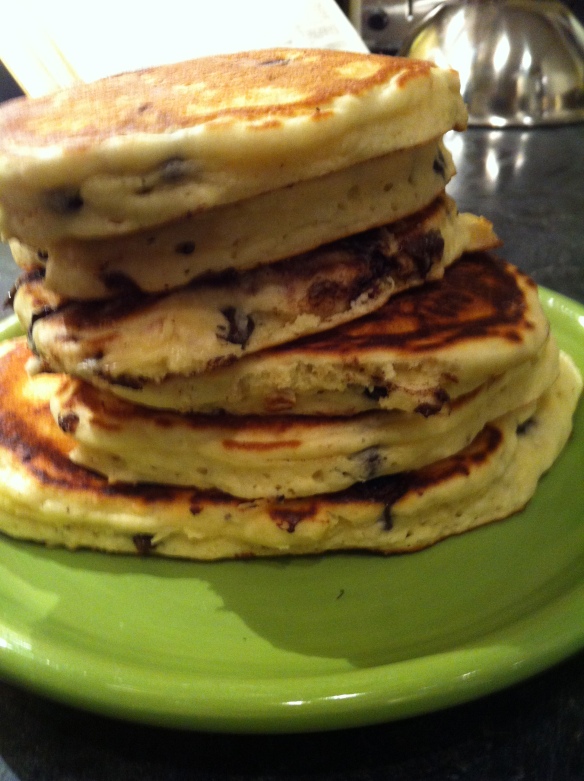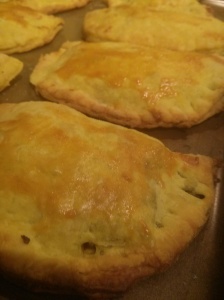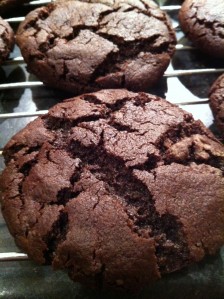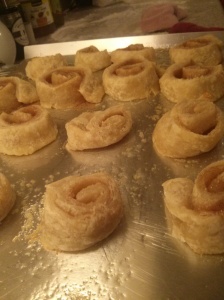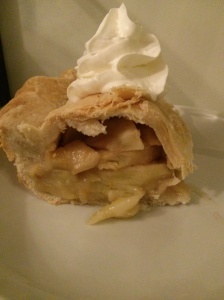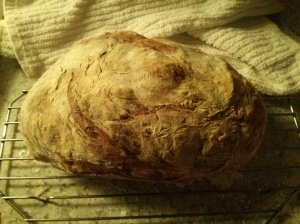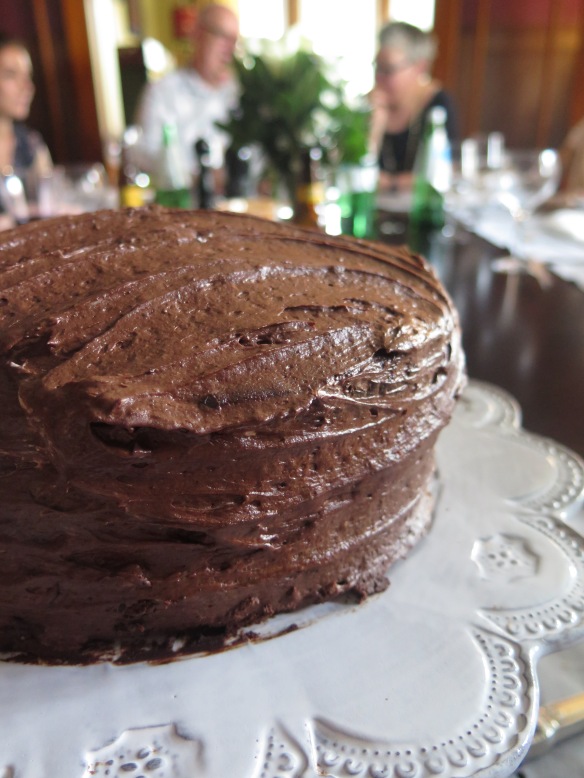 I’ve been telling myself to post this cake recipe on my blog. My partner and i discovered it while i was going through one of my bakeathon phases. I was a little less employed than i wanted to be, and i used my time to bake. I came upon this recipe for a Devil’s Food Chocolate Cake purely by happenstance and it remains one of my favourites to this day.
I’ve been telling myself to post this cake recipe on my blog. My partner and i discovered it while i was going through one of my bakeathon phases. I was a little less employed than i wanted to be, and i used my time to bake. I came upon this recipe for a Devil’s Food Chocolate Cake purely by happenstance and it remains one of my favourites to this day.
The recipe is from the New York Times Cooking website (which I must admit, I frequent… uh… frequently). What drew me to it was the vanilla bean and black pepper buttercream in between the cake layers. I love spicy chocolate anything, and the thought of sprinkling black pepper on my chocolate cake was irresistible. My brother and his girlfriend seemed to enjoy it too.
Cake
Ingredients:
- 10 tablespoons/140 grams unsalted butter, softened, more for greasing pans
- ⅔ cup/70 grams unsweetened cocoa powder
- ¾ cup/180 milliliters whole milk
- 2 cups/200 grams cake flour
- 1 ½ teaspoons/10 grams baking soda
- ½ teaspoon/3 grams baking powder
- ½ teaspoon/3 grams kosher salt, more as needed
- 1 ¾ cups/350 grams granulated sugar
- 3 large eggs
- 2 teaspoons/10 milliliters vanilla extract
Grease and line three 9-inch cake pans with butter and parchment. The parchment is essential if you want a whole cake layer to come out of the pans. I found this out the hard way and had to make my wedding cake twice. The night before the wedding. Use parchment.
In a small bowl, whisk together the cocoa powder and 2/3 cup boiling water. Add the milk. In a separate bowl, whisk together the flour, baking soda, baking powder, and salt. Set aside.
In a mixer fitted with the paddle attachment, beat the butter and sugar until light and fluffy. This is what will give your cake volume. Beat in the eggs, one at a time, until well incorporated. Then add the vanilla.
With the mixer on low speed, mix in a third of the dry ingredients. Follow that by half of the cocoa and water mix. Alternate between the dry and wet ingredients until the batter is fully mixed and there are no flour lumps visible. Divide it evenly among the pans.
Bake the cake at 350 F for 30–40 minutes, or until a tester comes out clean. Cool the cakes in the pans for ten minutes and then let them cool on the racks. While they are cooling, make the buttercream.
Swiss Buttercream
- 6 fresh egg whites (must be fresh)
- 1 cup granulated sugar
- 1 pinch salt
- 1 pound unsalted butter, room temperature
- 1 tsp vanilla bean paste
- 1 tsp freshly ground black pepper
- 8 oz unsweetened chocolate, melted (for later)
Swiss buttercream is finnicky. I have watched countless batches and dozens of eggs go into the compost because it was too hot or too cold or some unknown, diabolical reason. I also had to make the buttercream twice for this cake (and nearly lost the second batch!) leading me to find the most foolproof way of making it that I could. The following is the only version of this recipe that I can seem to make work on a regular basis, and I would advise you to follow it exactly.
Mix together the egg whites, sugar, and salt in a metal bowl or double boiler. Over medium-high heat, whisk the egg whites constantly (so that they don’t cook) until the mixture no longer feels grainy to the touch. Remove them from the heat and place them into a stand mixer fitted with the whisk attachment.
On medium-high speed, beat the egg white mixture until it is room temperature and very, very thick. This can take upwards of 5 minutes. Make sure it really does reach room temperature, otherwise you risk curdling it.
While the eggs are being beaten, chop up the butter into little bits. Remove the whisk attachment and replace it with the paddle attachment. On low speed, add the butter every 6 seconds until it is all gone. Then let the mixer continue to work until the butter and the egg whites form one beautiful batch of swiss buttercream. Add the vanilla bean paste and the pepper and mix until just incorporated.
At this point, the chocolate is not yet needed. Spread the buttercream in between the layers of the cake and put it in the fridge to cool. With the remaining icing, fold in the melted chocolate until it is smooth and shiny. You might be able to use the mixer for this, but I did it by hand to make sure the buttercream didn’t curdle. Once the cake is cool, spread the chocolate icing on top and around, covering it completely. The cake keeps well in the fridge for up to 3 days.



